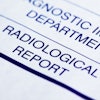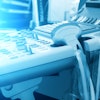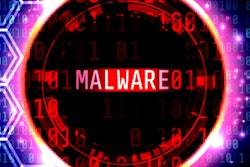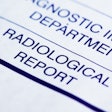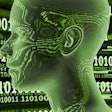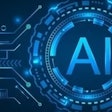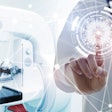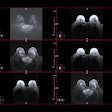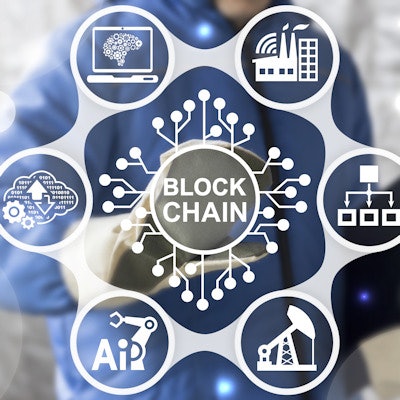
Blockchain technology could have many exciting applications in radiology and also facilitate the development of artificial intelligence (AI) algorithms. But key hurdles remain in the way of adoption of the technology, said Dr. Woojin Kim, who recently spoke in a webinar held by the Society for Imaging Informatics in Medicine (SIIM).
Widely known for its role as the technology supporting cryptocurrencies, blockchain enables the creation of an immutable ledger and databases in decentralized and distributed networks. Although blockchain offers the potential to benefit radiology, many limitations and challenges first need to be overcome, according to Kim.
"As this emerging technology becomes more widely adopted and the technology improves, it will become important for the radiology professionals to be more familiar with this technology and, more importantly, understand when to use this technology and when not to," said Kim, who is chief medical information officer at Nuance Communications.
Kim said that blockchain has a number of potential radiology applications:
- Medical records: Blockchain allows for patient-centric access and control of health data, allowing all authorized personnel to have access to information such as a contrast agent allergy, for example. Blockchain technology would give control of health records back to patients, while maintaining one uniform record that's not siloed in many different places, Kim said.
- Image sharing and teleradiology: Similarly, blockchain could enable patients to determine who has access to their images, Kim said.
- Claims and billing: Blockchain could be used in radiology to reduce fraud, speed up claims, and perhaps even facilitate preauthorization processes, he said.
- Supply chain management: Blockchain could be used to track and manage products in the radiology department, as well as to store inspections and maintenance records for imaging equipment.
- Credentialing: Blockchain could save time and money for radiologists in the currently arduous process of credentialing, according to Kim. If requested, radiologists could simply grant a hospital or medical board access to their records, including medical education history, continuing medical education (CME), and medicolegal records.
- Research and clinical trials: Blockchain could also facilitate research and clinical trials in radiology by enabling, for example, patients to share their images with researchers.
AI and the blockchain
In addition, Kim said that blockchain can be complementary to AI, offering potential benefit in all five steps of the life cycle of an AI model:
- Data access
- Data engineering
- Machine-learning/deep-learning training
- Model deployment
- Model management
"By using blockchain, one can create a decentralized infrastructure in the area of data that can support artificial intelligence," Kim said.
AI models require a lot of data for training. In addition, several studies recently have shown that AI models trained using data from a single institution are brittle and don't generalize well outside of that environment.
"One potential for blockchain is using it to create an open, shared, and decentralized data layer, allowing data contributions to come from diverse sources," he said.
With blockchain technology, an exchange set up between institutions to share medical images to support algorithm training wouldn't have to store a patient's actual DICOM images or protected health information (PHI), according to Kim.
"Instead, they could store metadata such as DICOM header tags or findings in images that would simply function as pointers to the actual dataset," he said. "Once found, the exchange can allow for secure peer-to-peer data exchange. Assuming that various institutions are willing to share, such a system would allow for much larger and diverse datasets for AI developers."
Better, easier AI development?
It would also offer an additional potential benefit of helping to deal with unintentional bias that can be encountered when developing AI models, he said.
"By also storing an audit trail of what data has been used for training the AI models as they change over time, you can track and look back when you discover bias in your AI models to see what data may be causing that bias," he said.
Blockchain may also be helpful for the important task of annotating the image data used for training algorithms. Kim noted that the People's Choice award at the 2018 SIIM meeting was presented to researchers from the University of Illinois Hospital for their Diagnosis Protocol project, which incentivized high-quality annotations and penalized bad annotations via a token economics system. Tokens earned by annotators could also be used to purchase access to the annotated datasets.
Once AI models have been trained, the next challenge is to get them out to end users. A number of companies have created AI marketplaces, including some that have proposed using blockchain to sell AI models and also even patient datasets, he said.
Following deployment, blockchain could help deal with the issue of adversarial attacks, in which an image is maliciously altered in an attempt to fool an AI algorithm.
"Blockchain -- with their hash values -- could potentially provide enhanced cybersecurity in image sharing and teleradiology to ensure that the images are not altered during transmission, essentially providing immutable images," according to Kim.
In addition, blockchain may speed up the validation of AI models after deployment by sharing the validation process with end users, he said.
Limitations and challenges
Kim cautioned, however, that it's also important to understand the limitations of blockchain technology. When compared with traditional databases, blockchain tends to be slower. There is also a scalability issue.
"If you needed more storage for a traditional database, you could simply add more servers," Kim said. "But not so with blockchain."
There's also an environmental impact due to its significant use of electricity.
Considerable challenges remain for applying blockchain in healthcare, he said. Although radiology tends to be at the forefront of technology in medicine, technology adoption in healthcare generally tends to be much slower than in other fields, according to Kim.
"Without successful implementation and use of blockchain, adoption will face even more challenges, for one of the main features of blockchain is its decentralized and distributed nature," he said. "However, if you have reluctance to share data -- such as between healthcare organizations -- then you have some major hurdles."
Technical issues
Even if the will to share data is there, there are also technical limitations.
"Let's face it, we're lacking the technical infrastructure for interoperability when it comes to healthcare," he said.
What's more, patient records -- and especially medical images -- are also too large in size to store on the blockchain. The general guidance is to store only minimum, but sufficient, data on the blockchain.
From the patient side, an important issue is blockchain's reliance on private keys -- cryptographic keys that are needed to access specific data on the blockchain. If a private key for a patient's protected health information (PHI) is lost, then the patient may lose access to all of his or her records, unless there's a good mechanism to counteract this in the application, according to Kim.
"The key management, I can tell you, is not easy, and definitely not easy for our elderly population to use," he said.
The transparency of the blockchain is also a limitation. Even if a user is anonymized using hash values, there is potential for that user to be identified.
"If a blockchain is public, then one can see all transactions and records and know who they belong to," he explained. "That's not something you want in healthcare. Given the highly sensitive nature of PHI, this is obviously a major challenge, and, therefore, this needs to be taken into account when designing blockchain applications in healthcare."
There are also regulatory hurdles. For example, it's unclear if random public keys and hash exam identifiers are sufficient for deidentification or if patient digital signatures on the blockchain are sufficient for PHI release under HIPAA, according to Kim.
The hurdles for blockchain are even greater in the European Union (EU), as its General Data Protection Regulation (GDPR) stipulates that personal data can't leave the EU, Kim said. That requirement will not allow for a public blockchain. What's more, the regulation's "right to be forgotten" provision means that personal data can't be placed on the blockchain due to its immutable nature.
In another hurdle, there's also the possibility that smaller blockchains could be vulnerable to a "51% attack," in which someone or an entity could acquire 51% of the blockchain's hashing power and then be able to falsify blockchain data. Technologies on the horizon such as quantum computing could also seriously threaten the security features of blockchain.
Final advice
It's so easy to get caught up in the hype of emerging technologies and buzzwords such as blockchain and AI, Kim said.
"Be honest and ask yourself, can this be done without a blockchain? Will it work just as well using existing technology?" he said. "Also ask yourself, is using blockchain a big improvement over the current process? Don't use it just because it's the latest technology that's being hyped. Don't use it in search of a problem. And if you do use it, start small."


